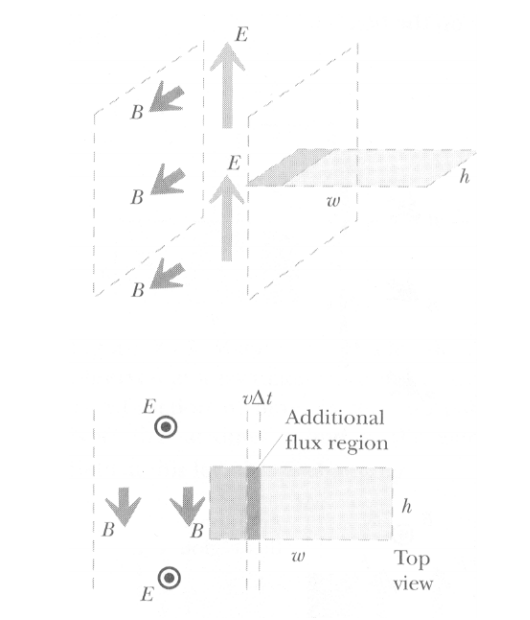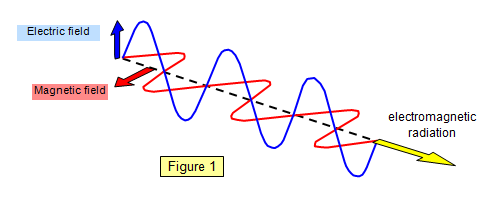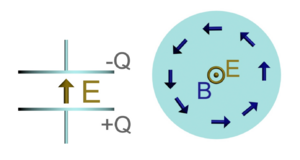Ampere-Maxwell Law: Difference between revisions
| Line 61: | Line 61: | ||
3) Constant in time | 3) Constant in time | ||
4) I don't know | 4) I don't know | ||
==Connectedness== | ==Connectedness== | ||
Revision as of 19:08, 30 November 2015
Claimed by Maria Rivero
Ampere-Maxwell Law
James Maxwell discovered that a time-varying electric field could be accompanied by a magnetic field. He thought of this after Faraday discovered that a time-varying magnetic field was accompanied by an electric field.
The time rate that is used for this equation is given by the derivative of the electric flux with respect to time. Because The derivative of the flux gives current over epsilon nod, the derivative of the electric flux times epsilon nod will also have units of amperes.
Where B is the magnetic field dl is the change in path The sum of I is the sum of the charges inside the path.
Example
Pick a closed, rectangular path in the xz plane with a height h and a width w. Calculate the speed v of the slab.
At a time change in t, we can calculate the area as the height (h) times the speed over the change in time. ⩟ A = v (⩟ t) h Because the electric field is constant in this region we can also calculate the change in electric flux over time as Evh(⩟ t) /(⩟ t) which is the same as Evh Calculating the path integral for the magnetic field we get that ∮B . dl = Bh cos 0 = Bh An important thing to notice is that there is no current I, so, using the Ampere-Maxwell Law we can see that
Bh = μ. [I+ ε. (vEh)]
but since there is no current,
B = μ. ε. (vE)
From Faraday's law we get that the emf equals the rate of change of the magnetic flux: Eh = Bvh
Substituting E = Bv into our previous equation we get that
B = μ. ε. (v(vB))
Solving for v we get that:
From the picture we see that the speed of light relates the a time varying electric and magnetic field.
What this implies
In the example above we saw that the speed of light relates the a time varying electric and magnetic field. This translates to the fact that an electromagnetic wave propagates at the speed of light.
Conceptual Questions
The plot above shows a side and a top view of a capacitor with charge Q with electric and magnetic fields E and B at time t. The charge Q is:
1) Increasing in time
2) Decreasing in time
3) Constant in time
4) I don't know
Connectedness
- How is this topic connected to something that you are interested in?
- How is it connected to your major?
- Is there an interesting industrial application?
History
Put this idea in historical context. Give the reader the Who, What, When, Where, and Why.
See also
Are there related topics or categories in this wiki resource for the curious reader to explore? How does this topic fit into that context?
Further reading
Books, Articles or other print media on this topic
External links
Internet resources on this topic
References
http://bulldog2.redlands.edu/fac/eric_hill/Phys232/Lectures/Ch%2023%20lect%201.pdf http://ocw.mit.edu/high-school/physics/exam-prep/electromagnetism/maxwells-equations/ http://ocw.mit.edu/courses/physics/8-02-physics-ii-electricity-and-magnetism-spring-2007/readings/summary_w13d1.pdf http://www.schoolphysics.co.uk/age16-19/Wave%20properties/Wave%20properties/text/Electromagnetic_radiation/index.html




